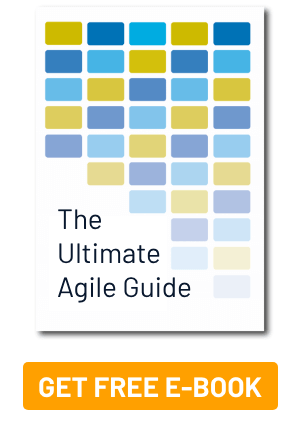As Eylean Board counts its fifth year this summer, we felt the need to not only celebrate but to also share the experiences and knowledge we gathered over the years into the Ultimate Agile Guide. And since we are all about the Agile methods and practices, a guidebook seemed like the logical way to go.
Now we are sure you have read many guides explaining what Agile is and how it works, so instead we focused this guide on our personal experiences and tips about the methodologies and how to apply them. We took our own, our clients and third party experiences into account and came up with suggestions and observations to help in various Agile transition processes.
We hope you enjoy the tips and have a smooth Agile adoption!
Download The Ultimate Agile Guide
What do we call Agile?
Agile is one of the newer project management approaches being used today. Originally it was started by the software development teams that needed more flexibility in their processes, and thus the four values and 12 principles of Agile Manifesto came about.
Over time the methods that were first created for developers gained traction and attracted a more varied group of industries and users. Many companies saw the value Agile could bring and therefore, it is now applied by financial institutions, marketers, sales, R&D, governments and others.
With the users, the number of Agile methods grew as well. The original ones such as Scrum and Kanban were reinvented, merged and completely rethought by various people using the core principles. The fact that no specific method is defined in the Manifesto allowed for a variety of them and also created a search for perfection in more places than one.
Despite this constant search, the three practices associated with Agile the most remained the same over the years. The overall favourite Scrum laid back Kanban and a merge of the two – Scrumban.






